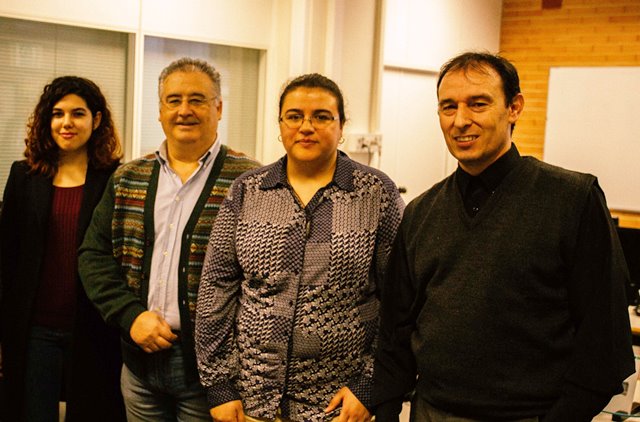Improving the quality of video transmission on the internet. This has was the objective of the research carried out in the doctoral thesis, Design of an Architecture and Communication Protocol for Video Transmission and Videoconference , by Doctor José Miguel Jiménez Herranz and supervised by Jaime Lloret, research professor at Campus Gandia of the Universitat Politècnica de València (UPV).
Online video streaming is a growing trend. According to Jiménez, around 50% of the population of the Americas, Europe, Asia and Oceania stream videos online every day. Additionally, live video streaming is key to numerous services, including business management, video games and other entertainment industries. “This has lead to an exponential increase in demand for systems and networks and greater difficulty in offering a good quality of experience, especially in environments with limited resources, such as mobile phone networks,” says the researcher.

José Miguel Jiménez Herranz and Jaime Lloret
INNOVATIVE ALGORITHM AND PROTOCOL
The solution proposed at Campus Gandia of the UPV is based on the development of innovative compression algorithms, which result in videos of the smallest size possible. “We have created coding and decoding algorithms for adaptive networks, as well as control mechanisms that regulate the quality of the experience from the beginning to the end of the cycle. In addition, we have designed, assembled and configured a WAN (Wide Area Network – the ones used by operators or governments); and we have also implemented performance tests to measure the parameters of variations in the quality of the network service and the impact on the quality of the image generated by the variation of these parameters,”explains Jiménez.
“We propose a communication protocol and an algorithm that enable operators to guarantee optimal IPTV service (Internet TV, among other utilities), adjusting the quality of the video to the device used and the bandwidth contracted by the client, so that they have the best experience possible. We have studied different coding languages, taking the bit rate and the coding time for heterogeneous networks into account, and using HTML5 programming language,” the researcher goes on to say.
“This information has been used to design an algorithm that controls the server and sends the appropriate type of video for the characteristics detected. The system is designed to be used in applications such as high-quality, bi-directional, real-time video chat, as well as multiple interaction through mobile device browsers, applications or games, “concludes Jiménez.
VIDEOCONFERENCING APPLICATION
The researchers have demonstrated the advantages of the algorithm and protocol for this purpose. “Although broadband consumption may be greater than what is found in already established commercial solutions, the prototypes presented show greater flexibility to adapt to a wide range of mobile devices and network platforms,” explains the doctor in telecommunications. 
According to the telecommunications engineer José Miguel Jiménez, the current networks present considerable limitations due to the rigid configuration motivated by the use of systems based on static commands. Furthermore, virtualization and the use of cloud-hosted technologies are changing the traffic patterns in the network and data centers. To solve these problems, network administrators traditionally implement solutions based on the replacement of physical infrastructures or redistribution of the load, which implies a high network maintenance cost. Additionally, network administrators do not usually have the necessary resources to instantly optimize the service in accordance with the demand, and thus offer a satisfactory service.
For all these reasons, the solution proposed by José Miguel Jiménez and Jaime Lloret is based on the implementation of networks with the capacity to adapt to situations, through agents that are able to learn. These automated agents are connected, share information and cooperate to achieve an optimized distribution in real time
Jiménez also explains that video transmission requires a large bandwidth. “Network congestion reduces bandwidth and has repercussions in the loss of information packets, in the propagation of errors and in delays; this can lead to a deterioration of video quality, frames freezing and errors in sound during communication.”
Communication and Marketing Officer, Campus Gandia.











